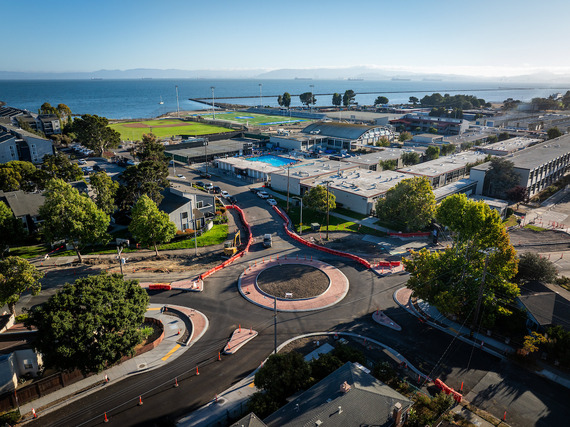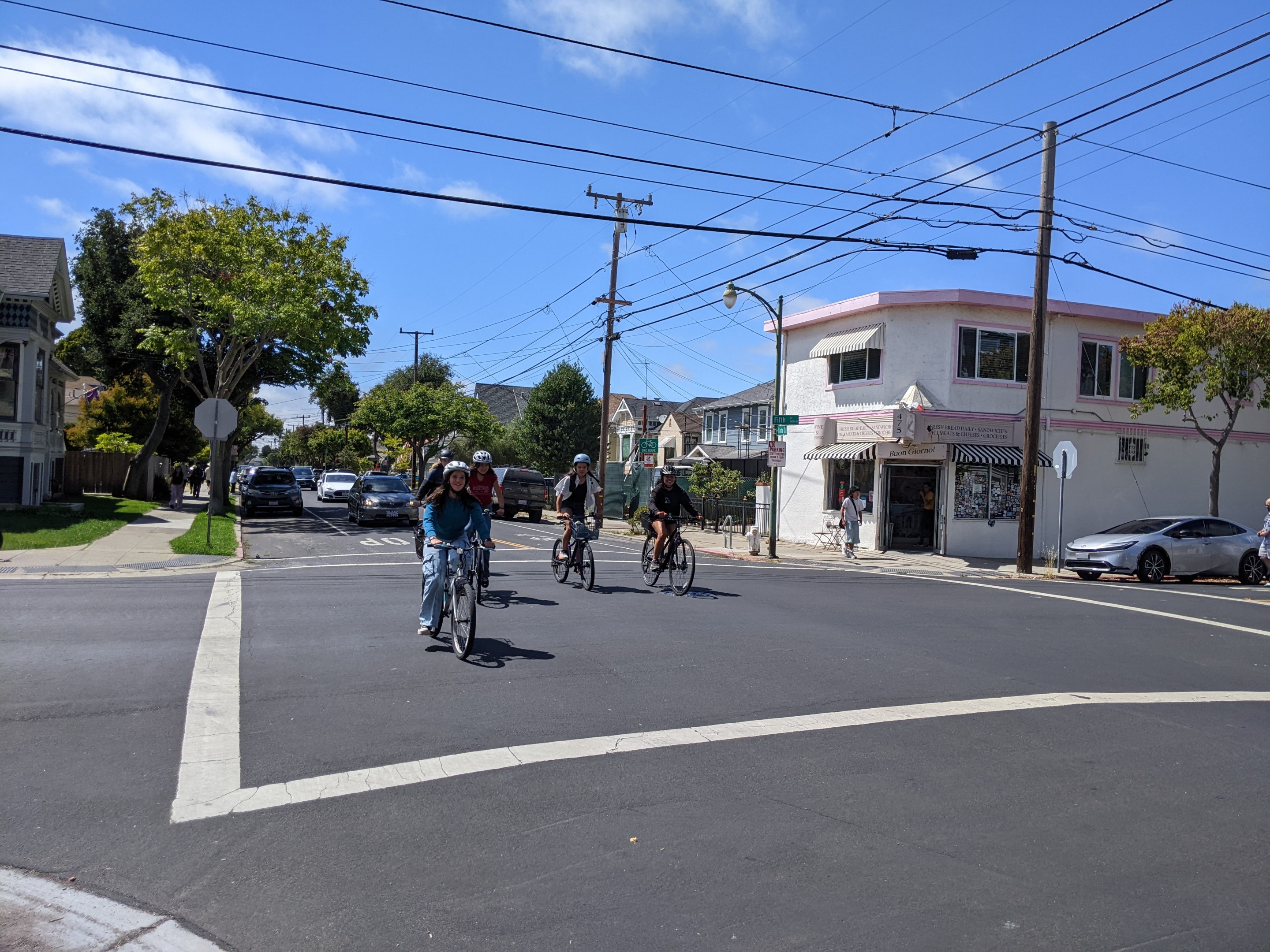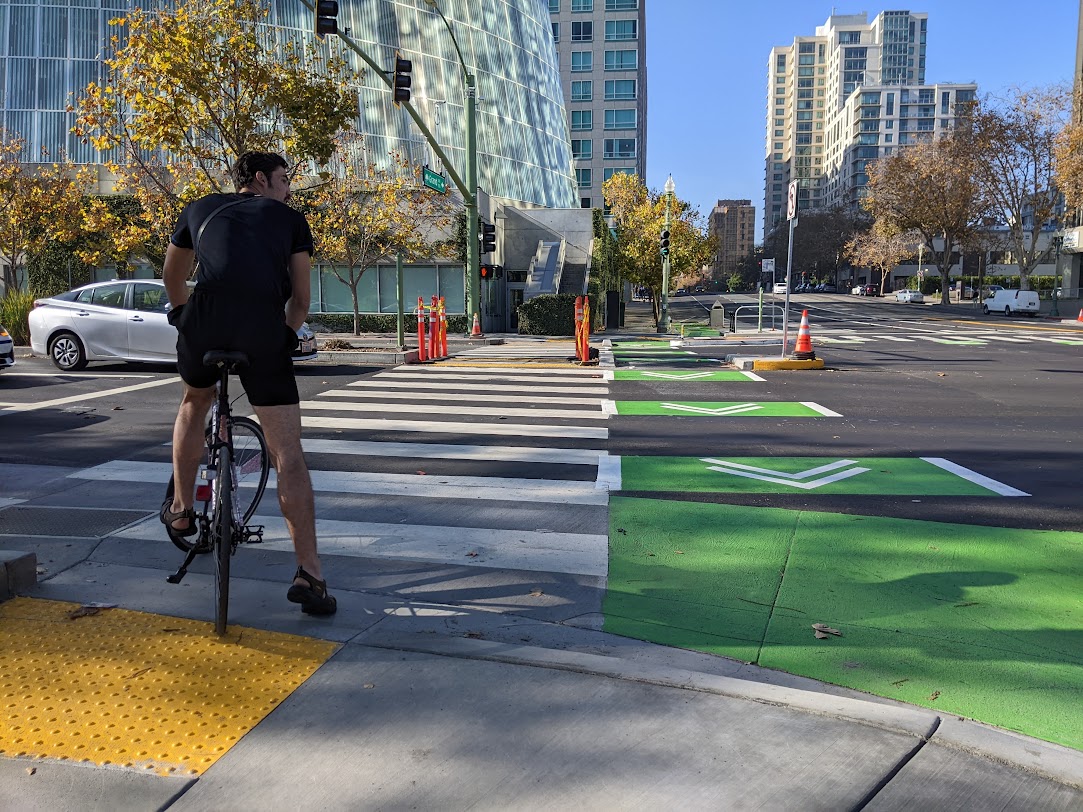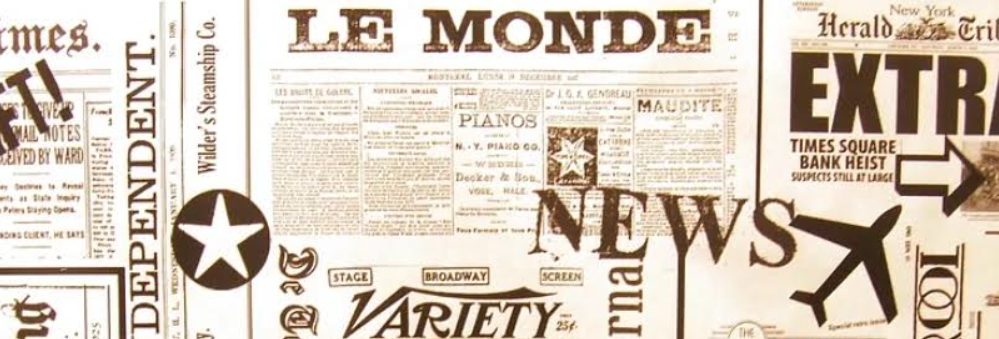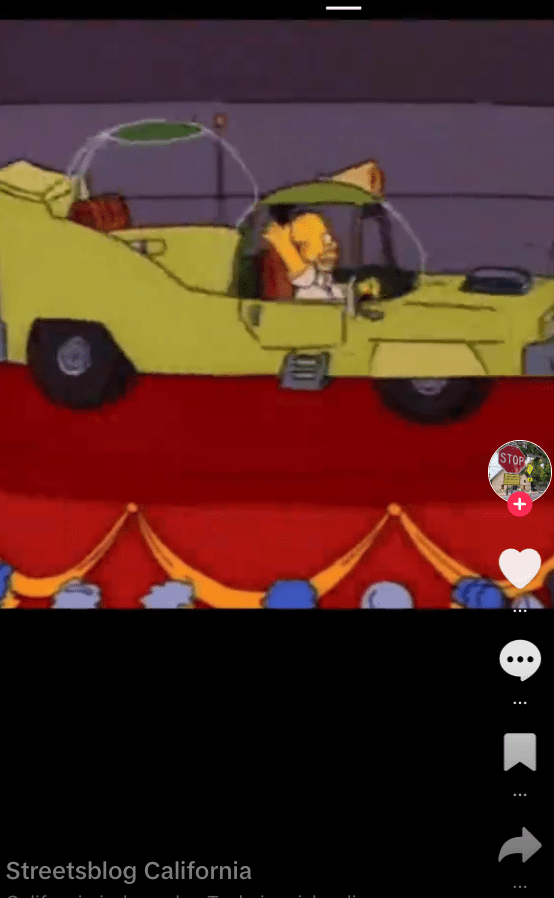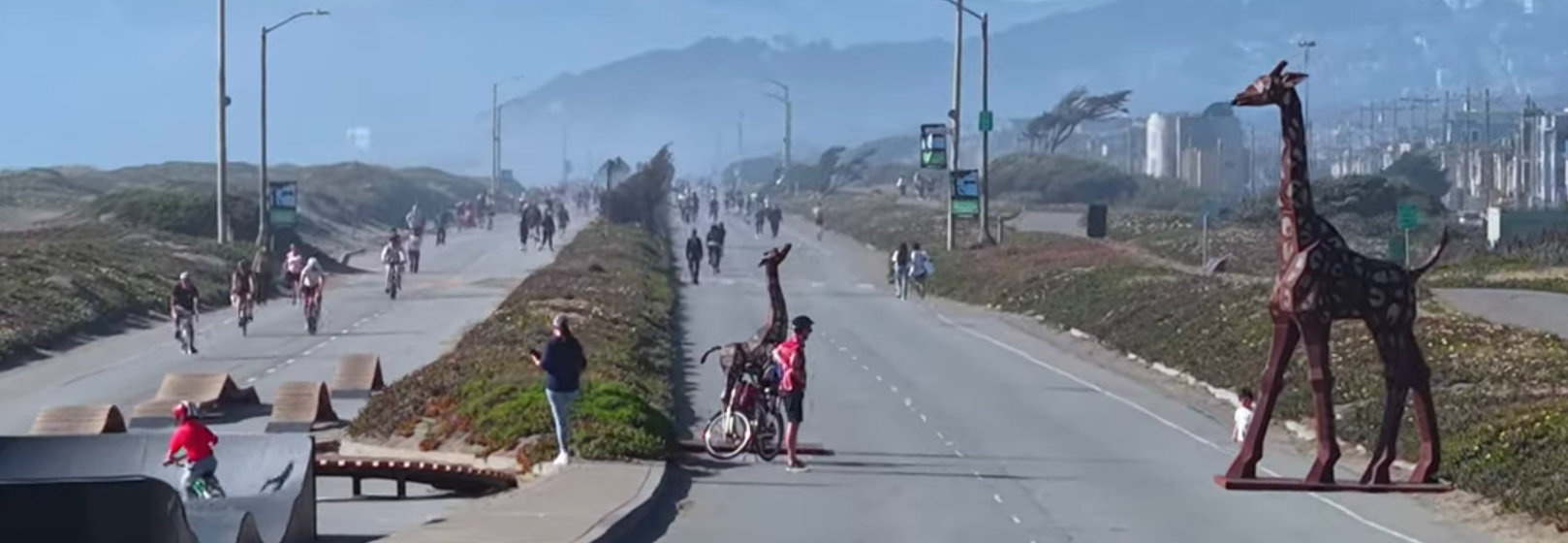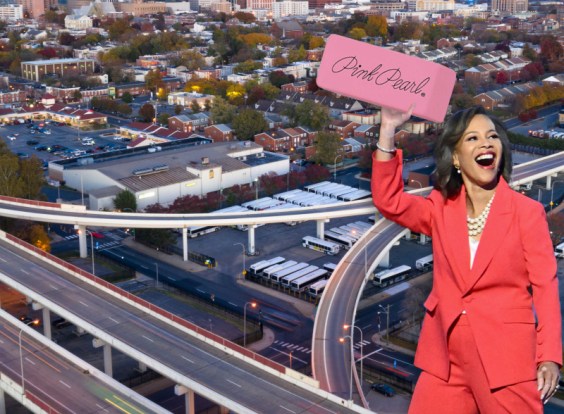A great safety project is well underway to make Central Avenue safe. However, the construction closures are, to some extent, encouraging drivers to detour onto Santa Clara, which, until last week, was a designated slow street.
This SeeClickFix request made to the city in July explains the problem:
Drivers keep driving through Santa Clara as a detour around Central Ave construction. We don't have any signage like other intersections along 5th St or like when construction began. We don't have any enforcement like in April. It's worse than ever. There are fewer people using the streets, instead only more drivers. Kids are afraid to ride bikes and scooters off of the sidewalks. I don't feel safe walking or biking because I get tailed by a driver who inevitably drives around aggressively and at high speed.
But rather than beef up enforcement or strengthen the slow street signs to keep motorists from driving dangerously, the city's "solution" was to remove the signs altogether (see the picture below of what was there until Thursday of last week), versus the same corner in the lead image Wednesday afternoon.
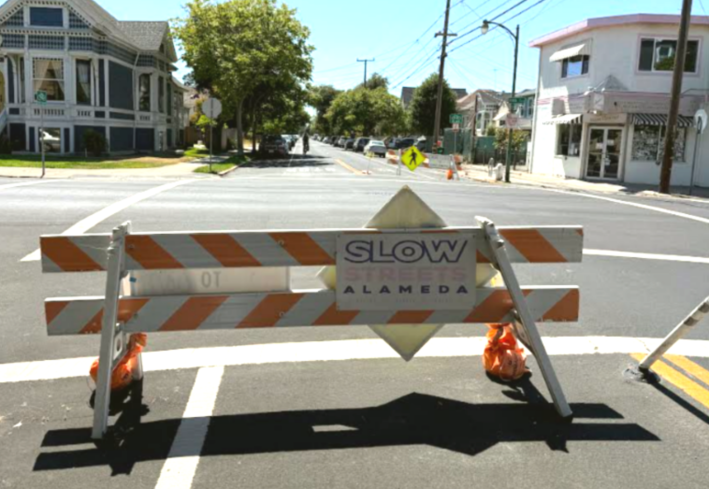
"The barricades on Santa Clara Slow Street are coming down ... leaving kids heading back to school by bike the choice of heavy street traffic or sidewalks (and pedestrian conflicts)," wrote Bike Walk Alameda's Cyndy Johnsen in an August 7 post on Facebook about the issue. "The bikeway along Central is expected to open in October, so we'll have at least two months of this."
Streetsblog reached out to Alameda's Department of Transportation and received no reply. But here's the explanation from the city website:
The City will remove the Santa Clara Ave Slow Street barricades today [Thurs., August 7] due to safety concerns [emphasis added] related to increased auto volumes anticipated with the start of school.
The City Engineer determined that the barricade removal is necessary for public safety based on increased traffic volumes and driver behavior observed during the spring Central Ave construction detours that are anticipated to occur again this fall.
Wait, removing safety features is necessary for public safety?
As Streetsblog watched kids biking, scootering, and walking from school on Wednesday afternoon, they were tailgated by lines of impatient motorists. Streetsblog also watched a driver in a lifted pickup truck blow through the intersection pictured in the lead image without even slowing down for the stop sign. Fortunately, there were no kids crossing at that moment.
Xo Wang, an advocate who lives on Santa Clara with his family, demanded to know how the city decided that removing slow streets signs made things safer. Here's an excerpt of the answer from Scott Wikstrom, the city's engineer, posted by Wang on social media:
All roadway users are safer with regular and expected interactions at intersections and removing the slow street barriers eliminated awkward and dangerous vehicular movements at these intersections.
Wang forwarded his response to Wikstrom to Streetsblog:
...what are the maneuvers mentioned and what were the resulting collisions? As you know, there's a big difference between the perception of safety of a traffic calming installation and its actual result. In fact, that perception is often how they function. Austin Transportation describes how traffic calming devices "discourage vehicles" by being "uncomfortable for drivers." The Federal Highway Administration manual (not exactly a modern traffic engineering organization) Traffic Calming ePrimer refers to measures as "forcing" or "encouraging motorists to slow" including by turning around partial closures, chicanes, and narrow radii. CalTrans (also extremely auto-centric) states "Typical partial closure implementation can help improve safety by reducing intersection conflict points and cut-through traffic," referring to just car-to-car conflict. The traffic calming mechanism of "forcing" drivers to perform a non-regular maneuver that requires more attention and slower speed is at odds with your statement, "All roadway users are safer with regular and expected interactions."
From Streetsblog's view, Wang is absolutely correct and Wikstrom's decision is, sadly, consistent with the American traffic engineering profession. Everything is geared, in a fundamental way, to drivers first. So parents driving kids to school was considered first, and kids biking to school, not so much. So if a barrier is causing drivers to swerve, even if they're driving in a place they're not supposed to be, they remove the barrier, instead of bolstering it to force motorists to slow down and drive responsibly. How about, instead of removing the barriers, add big planters and concrete Jersey barriers?

And if that causes drivers to divert to another street and drive recklessly, make that street safe too. But in the end, if enough streets are slowed and safe for cyclists, traffic will eventually reduce as people find alternatives to driving. And people who still need to drive will simply have to put their phones down and drive slowly and carefully, or they will risk damaging their cars. The alternative is to put kids on bikes and scooters and on foot in danger, and that's unacceptable. Or at least it should be.
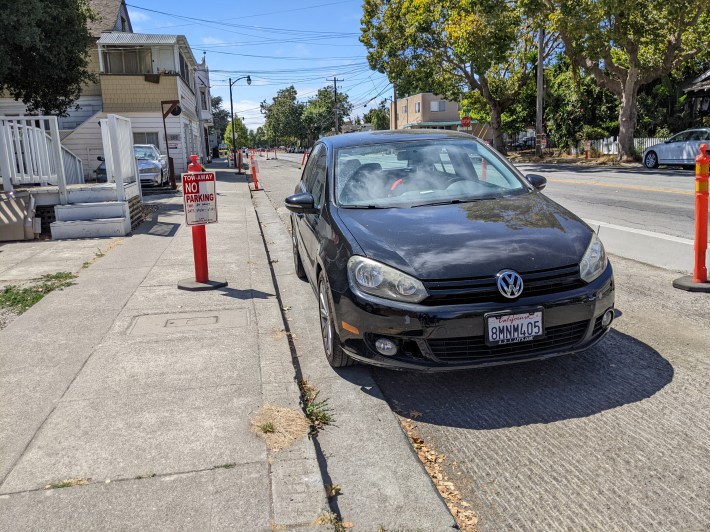
As one poster put it on Facebook: Wikstrom needs to use his "civil engineering expertise to devise a better barrier layout along Santa Clara that increases (or even obligates) compliance from drivers."
Or as another poster put it even more simply: "Cars are doing dangerous things, so we removed the barriers so we reduce the city's liability for the dangerous things. WTF."
